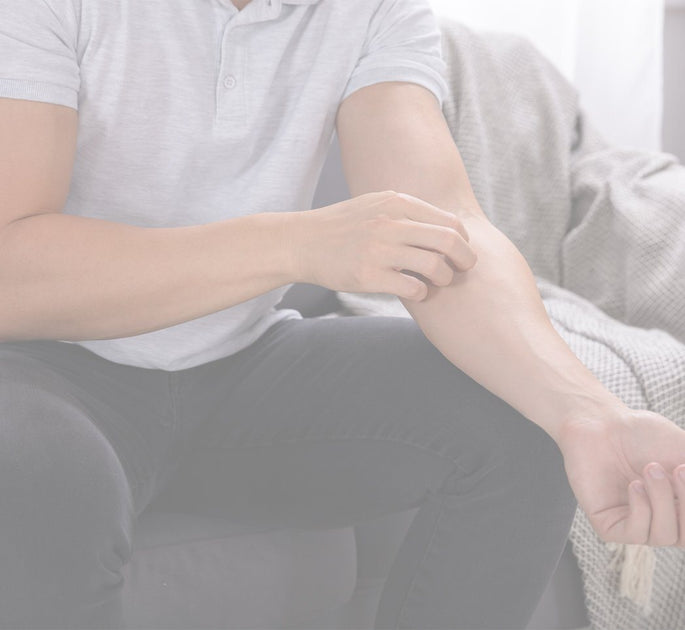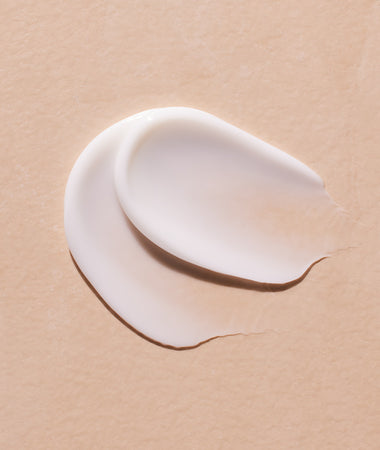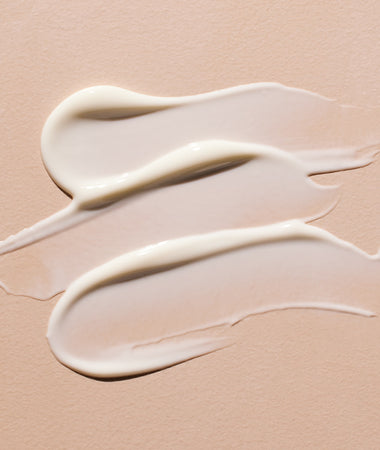
What Is Contact Dermatitis: Causes, Symptoms, And Treatment
Your skin is not only your largest organ; it’s also your body’s first line of defense against the environment. But sometimes you can find yourself (or your child!) with an itchy, red rash. This might be irritation and inflammation called contact dermatitis.
Here, we’ll share what contact dermatitis is, what causes it, and its symptoms. And, most importantly, we’ll offer simple and natural ways you can treat contact dermatitis (in you or your little ones!) to keep your skin feeling great.
What Is Contact Dermatitis?

To understand what contact dermatitis is, we can break it down into the two separate words: contact and dermatitis.
Dermatitis refers to general skin inflammation and irritation. Add “contact” before it and this refers to skin irritation due to contact with a specific irritant.
It is, simply put, when your skin is allergic to or irritated by something that has touched it. Keep in mind that this condition is different from eczema, although eczema leaves your skin more prone to contact dermatitis.
There are two types of contact dermatitis — irritant contact dermatitis and allergic contact dermatitis — but they are quite similar. It’s important to see your physician if you believe you have either one of these conditions.
That said, for the purposes of this article, we’ll discuss contact dermatitis in general. This common rash can happen to anyone, from babies to adults. So, what are some things that can cause it? Let’s take a look.
Causes Of Contact Dermatitis

The cause of the irritation and inflammation of contact dermatitis is very dependent on each individual person. The culprits can be anything from drool to detergent, lotion to latex.
To give you an idea, here are a few things that can often be blamed for contact dermatitis:
- Plants (think poison ivy)
- Skincare products
- Makeup
- Jewelry
- Sunscreen
- Perfume
- Metals like nickel or chrome
- Latex
- Drool
- Detergent
- Cleaning products
- Urine (when your baby’s diaper isn’t changed)
- Ointment or medicine
When trying to discover the cause of your or your child’s contact dermatitis, it’s important to remember two things.
First of all, while some irritation is immediate, contact dermatitis may be caused by something that was in contact with your skin some time ago — even hours or days.
Secondly, substances that irritate your skin can change over the years! What didn’t irritate your skin 10 years ago might give you problems now.
Before we move on to how to treat and prevent contact dermatitis, let’s review what this skin irritation looks and feels like so you can know how to recognize it when it strikes.
Symptoms Of Contact Dermatitis

You might know all too well what the irritation and inflammation of contact dermatitis feels like. If not, here’s the scoop.
An itchy, painful, or swollen rash can develop. It is typically well-defined and confined to the area that was in contact with the irritant. The skin could become red, blister, or appear like a burn. Or the skin may be dry and scaly and peel or ooze.
Keep in mind that if your little one has contact dermatitis, they might not be able to express it to you in words. Instead, you may notice that they are fussy and see the signs on their skin.
Regardless of whether it’s you or your little one struggling with this annoying skin condition, the steps to treat and prevent it are basically the same! Let’s dive in.
Treating Contact Dermatitis
Call Your Doctor, Pediatrician, Or Dermatologist
Contact dermatitis can often be managed with care like the tips we will give you below. That said, it’s also important to get in touch with your doctor, pediatrician, or dermatologist if you think something else may be going on.
It’s always better to be on the safe side!
Avoid Triggers
One of the first steps to take when you’re dealing with skin irritation and inflammation is to find out what causes it. Which, of course, might be easier said than done.
Once you’ve done the detective work, avoid the triggers that are causing your skin to react. For example, this could mean changing skincare or cleaning products or avoiding certain types of jewelry.
If you find that skincare products are the culprit, try natural and hypoallergenic options that will soothe and calm your skin.
For instance, swap chemical sunscreen for a mineral sunscreen, like Mustela’s SPF 50 Mineral Sunscreen Lotion.
This sunscreen is certified with the National Eczema Association (NEA), fragrance-free, compliant with Hawaii’s sunscreen ingredient requirements, and formulated with 93% naturally derived ingredients. It’s also available in a spray and stick for convenience!
And for a hypoallergenic, Environmental Working Group Verified (EWG) lotion for the whole family, turn to Mustela’s Organic Hydrating Cream with olive oil and aloe.
Wash Clothes

Since detergent can sometimes cause irritation for those with sensitive skin, choose a hypoallergenic laundry detergent. And, when you hit the stores, wash your new clothes before wearing them.
If you find that clothes are causing contact dermatitis on your baby, in addition to sticking with hypoallergenic laundry detergent, try dressing them in Stelatopia Skin Soothing Pajamas before bed.
NEA-certified and made with microcapsule technology, these 100% cotton pajamas deliver skin-soothing moisture to the skin throughout the night.
Wash Your Skin
Avoiding triggers and irritants is ideal. But life happens!
If you know that you or your child has come in contact with an irritant, wash the skin with soap and water. The key is to use a gentle soap that will soothe the skin, not create more problems!
Cleanse your or your child’s skin with Mustela’s EWG-verified Soothing Cleansing Gel, which is designed for very sensitive skin.
While it’s made for the rashy or reactive skin of a baby or child, this fragrance-free cleanser is also ideal for adults with inflamed or irritated skin.
With 98% natural ingredients, like avocado perseose and schizandra, Soothing Cleansing Gel effectively cleanses and soothes your skin at the same time. Plus, it’s free of questionable ingredients such as parabens, phthalates, and phenoxyethanol.
We also recommend our Stelatopia range of skincare products, which are all designed for eczema-prone skin.
Here’s another hint for keeping skin clean. Some babies get a rash simply from their own drool! If that’s the case with your little one, simply remember to clean them up throughout the day.

Be Gentle With Your Skin
Once your skin is already irritated and inflamed, any other factor can irritate it even more.
Be gentle with your skin in general and especially when you are toweling off after a bath or shower. Instead of rubbing yourself (or your little ones) dry, gently pat your skin.
Apply A Hypoallergenic Lotion

With sensitive or irritated skin, you need to be careful not to apply any skincare products that will contribute to the problem. Choose lotions that are designed to hydrate dry, rashy skin without adding insult to injury.
For example, Mustela’s Soothing Moisturizing Body Lotion is a hypoallergenic, fragrance-free daily body lotion that protects and relieves highly sensitive skin.
Once again, this lotion is made with babies in mind, but it is gentle and effective enough for anyone who wants to reap all its wonderful benefits!
Take An Oatmeal Bath
An oatmeal bath can serve to help you relax at the end of the day as well as soothe and calm your skin since colloidal oatmeal is naturally anti-inflammatory.
Drawing up an oatmeal bath is easier than you might think! Finely grind oats in a blender or coffee grinder, and then add a few scoops of the ground oats to your warm (not hot) bathwater.
Use Cold Compresses
Coolness can help relieve some of the symptoms of contact dermatitis. And you don’t have to get fancy here!
Simply soak a clean towel or washcloth in cold water, wring out the excess water, and lay it on the affected area for 10 or 15 minutes.
Apply Diaper Cream

Diaper rash is basically contact dermatitis that is caused by sitting in a wet or dirty diaper a little too long.
While some babies are more prone to developing a rash, you can help prevent it by keeping their bottom squeaky clean.
At every diaper change, wipe them well with a non-irritating wipe, like Mustela’s fragrance-free Certified Organic Water Wipes with Cotton and Aloe, and then apply a protective diaper cream.
Mustela’s Diaper Cream with Olive Oil and Aloe contains 99.7% naturally derived ingredients including zinc oxide, aloe vera, sunflower oil, and olive oil. It’s designed to leave a moisturizing layer on your baby’s skin to soothe and diminish redness.
And it’s not only good for your baby’s skin, but it’s eco-friendly, too! The packaging is made from sustainably sourced sugar cane, and we’ve gotten rid of secondary cartons.
Kick Contact Dermatitis To The Curb

When the itchy, red, inflamed rash of contact dermatitis shows up, you know you’ve come in contact with something that doesn’t agree with your skin. The good news is that by staying away from irritants and triggers, you can help keep this problem at bay.
To calm your or your little one’s skin when it’s irritated, remember to be extra gentle with it and hydrate with Mustela’s Soothing Moisturizing Body Lotion.
Whether it’s you or your child dealing with contact dermatitis, with the treatment tips listed in this article, you can naturally soothe your skin and kick irritation to the curb!
- reg.
- $22.00
- Sale price
-
$22.00
- reg.
-
reg.
- Unit price
- /per
- reg.
- $22.00
- Sale price
-
$22.00
- reg.
-
reg.
- Unit price
- /per
Suggested Articles

Your Baby Has Eczema-Prone Skin

Your Baby's Skin: Intolerant And Easily Irritated Skin

Dry and Eczema Prone Baby Skin
Get tips, news
and exclusive offers






